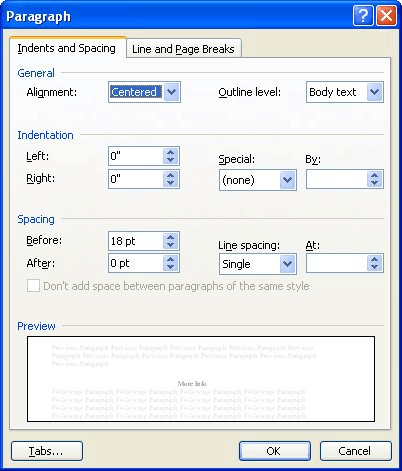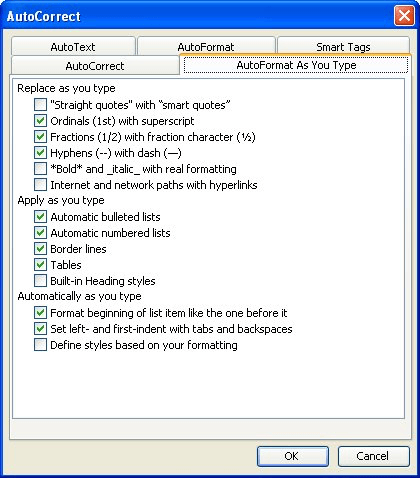Please Note: This article is written for users of the following Microsoft Word versions: 2000, 2002, and 2003. If you are using a later version (Word 2007 or later), this tip may not work for you. For a version of this tip written specifically for later versions of Word, click here: Compound List Formatting.
It is often quite handy to create lists of information that can be used in your documents. One sign of how popular (and common) lists are is Word's inclusion of the Numbering and Bullets tools on the formatting toolbar.
You may, however, want to create what I call a "compound format" for your lists. For instance, you may want the first word, phrase or sentence of each list item shown in bold, or in bold italics. This is very common when using list items to define terms, such as in a glossary. The term being defined is shown in bold type, followed by a period, and then followed by a definition in regular type.
The next time you have a need to create lists that use "compound formatting" of this type, try out the following steps. (These steps will only work in Word 2000 or later versions.)

Figure 1. The Paragraph dialog box.
Now, when you start typing again, the first word, phrase, or sentence of the next list item—everything up to a valid terminator (see step 7)—uses the formatting you set in step 6, and the rest of the list item uses regular type.
If you try these steps on your system and they do not work, then check this out:

Figure 2. The AutoFormat As You Type tab of the AutoCorrect dialog box.
If the check box noted in step 3 is not selected, the steps presented earlier in this tip will not work.
WordTips is your source for cost-effective Microsoft Word training. (Microsoft Word is the most popular word processing software in the world.) This tip (1565) applies to Microsoft Word 2000, 2002, and 2003. You can find a version of this tip for the ribbon interface of Word (Word 2007 and later) here: Compound List Formatting.

Do More in Less Time! An easy-to-understand guide to the more advanced features available in the Microsoft 365 version of Word. Enhance the quality of your documents and boost productivity in any field with this in-depth resource. Complete your Word-related tasks more efficiently as you unlock lesser-known tools and learn to quickly access the features you need. Check out Microsoft 365 Word For Professionals For Dummies today!
Don't want your paragraphs to flow from one page to another? Word provides a formatting setting that forces individual ...
Discover MoreTired of the formatting used in a paragraph? One way to "start over" is to make sure that the formatting is reset to its ...
Discover MoreYou may search high and low for a way to add automatic numbers to paragraphs in a document. You won't find the ...
Discover MoreFREE SERVICE: Get tips like this every week in WordTips, a free productivity newsletter. Enter your address and click "Subscribe."
There are currently no comments for this tip. (Be the first to leave your comment—just use the simple form above!)
Got a version of Word that uses the menu interface (Word 97, Word 2000, Word 2002, or Word 2003)? This site is for you! If you use a later version of Word, visit our WordTips site focusing on the ribbon interface.
Visit the WordTips channel on YouTube
FREE SERVICE: Get tips like this every week in WordTips, a free productivity newsletter. Enter your address and click "Subscribe."
Copyright © 2025 Sharon Parq Associates, Inc.
Comments